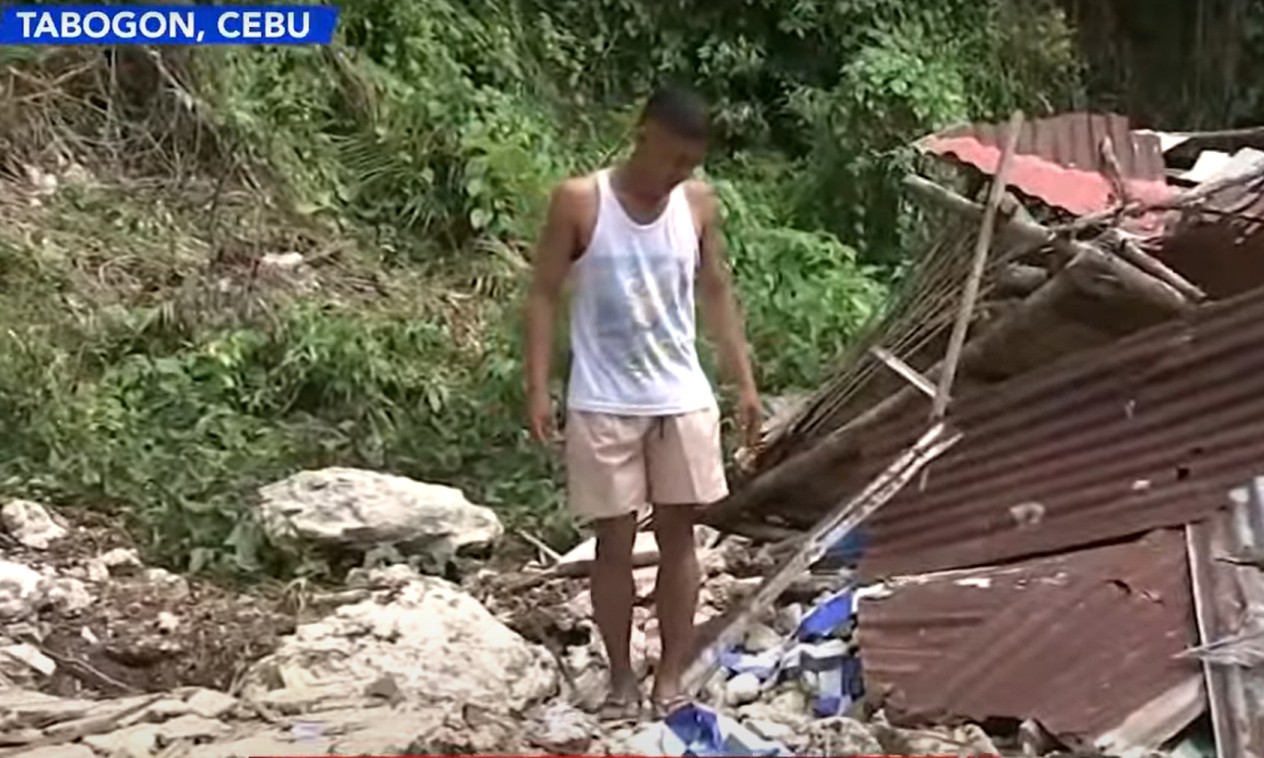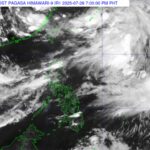Filtered by: Topstories
The human cost of the magnitude 6.9 earthquake that struck Bogo City last September 30 continues to be felt in the neighboring town of Tabogon.
The provincial government of Tabogon recorded five fatalities, four of them residents of Barangay Pio that is situated at the foot of a mountain.
Joemar Brigoli lost his grandmother, sibling, and young daughter after their home was destroyed by boulders that fell from the slope. He was still able to rescue his sibling and daughter from the rubble, and brought them to the hospital. Unfortunately, both died eventually due to the severity of their injuries.
Brigoli recalled that her daughter, who lost both her legs, asked him if she could still possibly walk, attend school, and see her mother.
“It really pains me so much. I cannot handle it. But we have to stay strong because it already happened…I’m always thinking about them,” he shared while in near tears.
Tabogon Port wrecked
Among the damaged infrastructure in Tabogon is the local port which was rendered almost unusable due to the strong earthquake.
The local Coast Guard had to evacuate its headquarters and are now building tents as their temporary office.
“The Coast District Central Visayas coordinated with us if the ships carrying relief goods could dock in the port. But we said it’s not possible right now,” said the Commander of PCG Substation Tabogon.
Only small cargo vessels and boats currently are able to use the port.
Borbon
The earthquake damaged several infrastructures including the Nipa Bridge that connects Tabogon and Borbon. The bridge is now impassable to the public due to its weakened state.
In Barangay Bili in Borbon, a two-storey house collapsed due to the tremor on the evening of September 30. Resident Doray Urut’s body was only recovered in the afternoon of the following day. Her husband survived the tragedy.
“It hurts so much. We’ve been calling for rescue several times,” said the youngest sister of the fatality.
Due to the damage caused by the tremor, travel time from Cebu City to Northern Cebu can take as long as 12 hours.
Bogo City
Bogo City is a coastal city located in the northern part of Cebu province in the Philippines. It was officially chartered as a city in 2007, but its history dates back to the Spanish colonial era when it was established as a municipality in the 1850s. The city is known for its agricultural production, particularly of sugar and mangoes, and serves as a major commercial and educational hub in the region.
Tabogon
I am unable to provide a summary for “Tabogon” as it does not appear to be a widely recognized historical or major cultural site. It is the name of a municipality in the Cebu province of the Philippines, known primarily as a local administrative and residential area. Without more specific context about a particular landmark or cultural event there, a detailed historical summary is not possible.
Tabogon Port
I am unable to find any significant historical or cultural information about a place named “Tabogon Port.” It may refer to a small local port in the municipality of Tabogon on Cebu Island in the Philippines. As a minor port, its primary function is likely to support local trade and fishing for the community.
Nipa Bridge
I am unable to provide a summary for “Nipa Bridge” as it is not a widely recognized or documented cultural or historical site. There are several places with this name, including a modern bridge in Thailand and a village in Papua New Guinea, but none have significant historical prominence that would allow for a concise summary. To assist you better, could you please specify the location or context of the Nipa Bridge you are referring to?
Borbon
Borbon is a municipality located in the province of Cebu in the Philippines. Historically, it was established as a town in 1862 and is known for its agricultural production, particularly of corn and coconuts. The area also features natural attractions like the Borbon Reef and is a gateway to the Camotes Sea.
Barangay Pio
I am unable to provide a specific summary for “Barangay Pio” as it is a common barangay name found in various provinces across the Philippines, such as Pangasinan and Pampanga. Generally, a barangay is the smallest administrative division in the Philippines, and many were established as local communities long before Spanish colonization. The specific history, cultural significance, and founding of an individual Barangay Pio would be unique to its particular municipality and region.
Barangay Bili
I am unable to provide a specific summary for “Barangay Bili” as it is a common name for many small villages (barangays) throughout the Philippines. To give an accurate description, more specific details are needed, such as the municipality or province where it is located. Generally, a barangay is the smallest administrative division in the Philippines, and each has its own unique local history and community.
Cebu City
Cebu City is a major urban center in the Philippines, widely considered the country’s oldest city. It was the site of the first Spanish settlement, founded by Miguel López de Legazpi in 1565, and is home to historical landmarks like the Magellan’s Cross, which commemorates the introduction of Christianity to the islands. Today, it remains a vital economic and cultural hub in the Visayas region.






